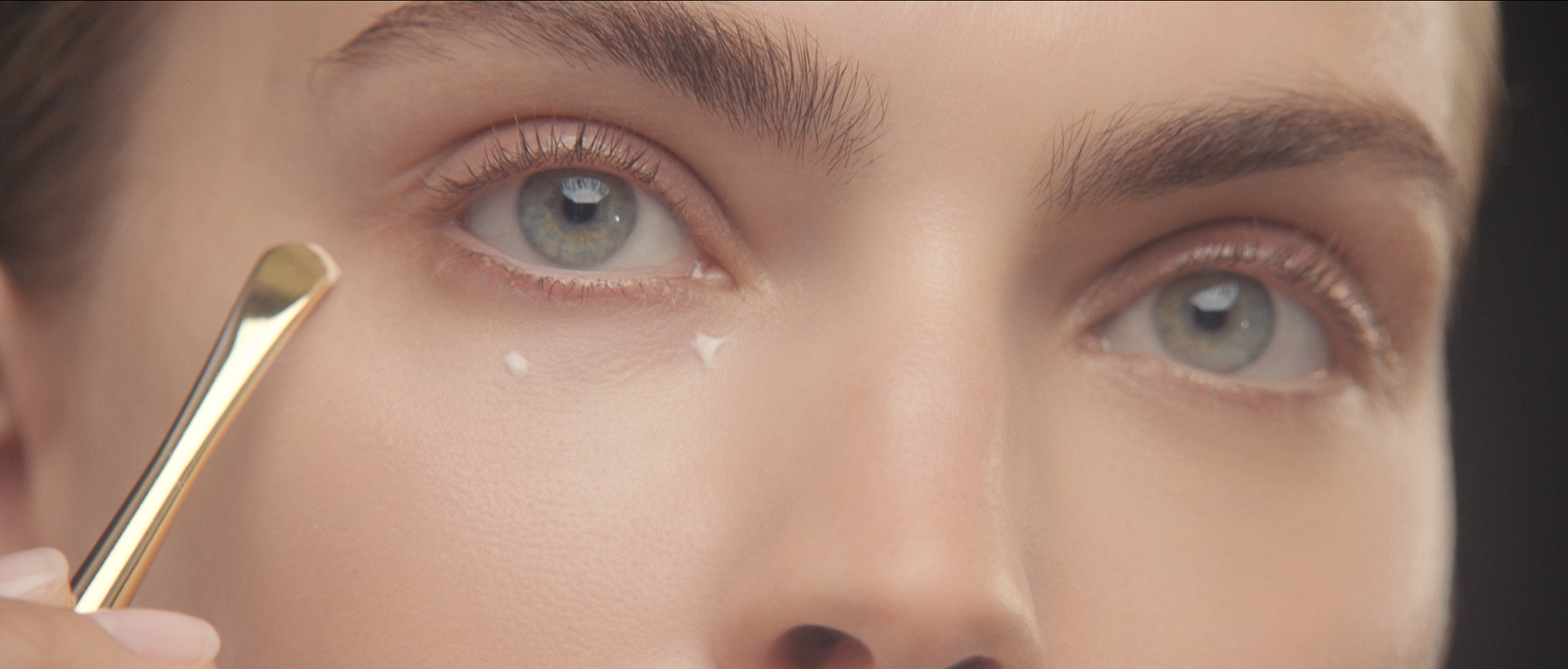
Capturing Beauty for Estée Lauder
Cinematographer Idan Menin details his approach to shooting glamorous campaign spots for the company’s line of Re-Nutriv products.
Cinematographer Idan Menin details his approach to shooting glamorous campaign spots for the company’s line of Re-Nutriv products.
When it comes to shooting commercials for cosmetic products, grace and beauty are the names of the game, especially for a giant like Estée Lauder — the images must be sumptuous and decadent. Enter young cinematographer Idan Menin, a graduate of Florida State University’s film school and the Global Cinematography Institute — an expanded-education program started by Yuri Neyman, ASC and the late Vilmos Zsigmond, ASC, HSC.

Menin was born in New York City and came up in the business through the electrical department. His entry into Los Angeles was working for Cine Power and Light Rentals in North Hollywood. After rising through the ranks in crews to best boy, Menin jumped from electrics to the camera department and worked as a 1st AC before starting to shoot full time. He completed his first feature film as cinematographer, Of Fortune and Gold, in 2015 with two more following that and has since been behind the lens on commercials for Ford, Hyundai, Sprint, Microscoft and Skype.
Several years ago, Menin worked with director/cinematographer Jean-Claude Thibaut as a camera assistant on a commercial and the two hit it off. After some inspired conversations about various projects, Thibaut called Menin to photograph a series of campaign spots for Estée Lauder Re-Nutriv line of products.
“We shot on the Arri Amira with a Panavision Primo 11:1 zoom,” says Menin. “I choose that camera because we needed a 16:9 sensor to satisfy the needs of internet and television spots, but also to rotate the camera 90 degrees to shoot 9:16 material for duty-free shops and vertical screens in malls and various locations. We also needed a good deal of slow motion and I knew I could shoot 200 frames per second at 2K with the Amira. I didn’t want to punch-in on the Red Dragon or Helium to frame for both formats, nor did I want to center compose the vertical out of the regular composition, so I elected to shoot a 16:9 camera on a three-axis Lambda head so that I could shoot horizontal 16:9 and then rotate the camera 90 degrees and shoot the 9:16 material right after.
“Jean-Claude likes zooming a lot,” continues Menin. “We did a lot of dolly zooms and I wanted to have a full range to push in on the dolly and zoom into details on the eyes and fingers and hands applying skin care products, which made the range of the 11:1 Primo Zoom perfect for me. Operating was all about sensual movements. We wanted things to have a floaty, romantic feeling. Smooth shots that have transitional moves from one to another. We were really trying to move the frame elegantly and smoothly. Jean-Claude said several times, ‘I want the camera to make love to the subject!’ So that was what I tried to do.”
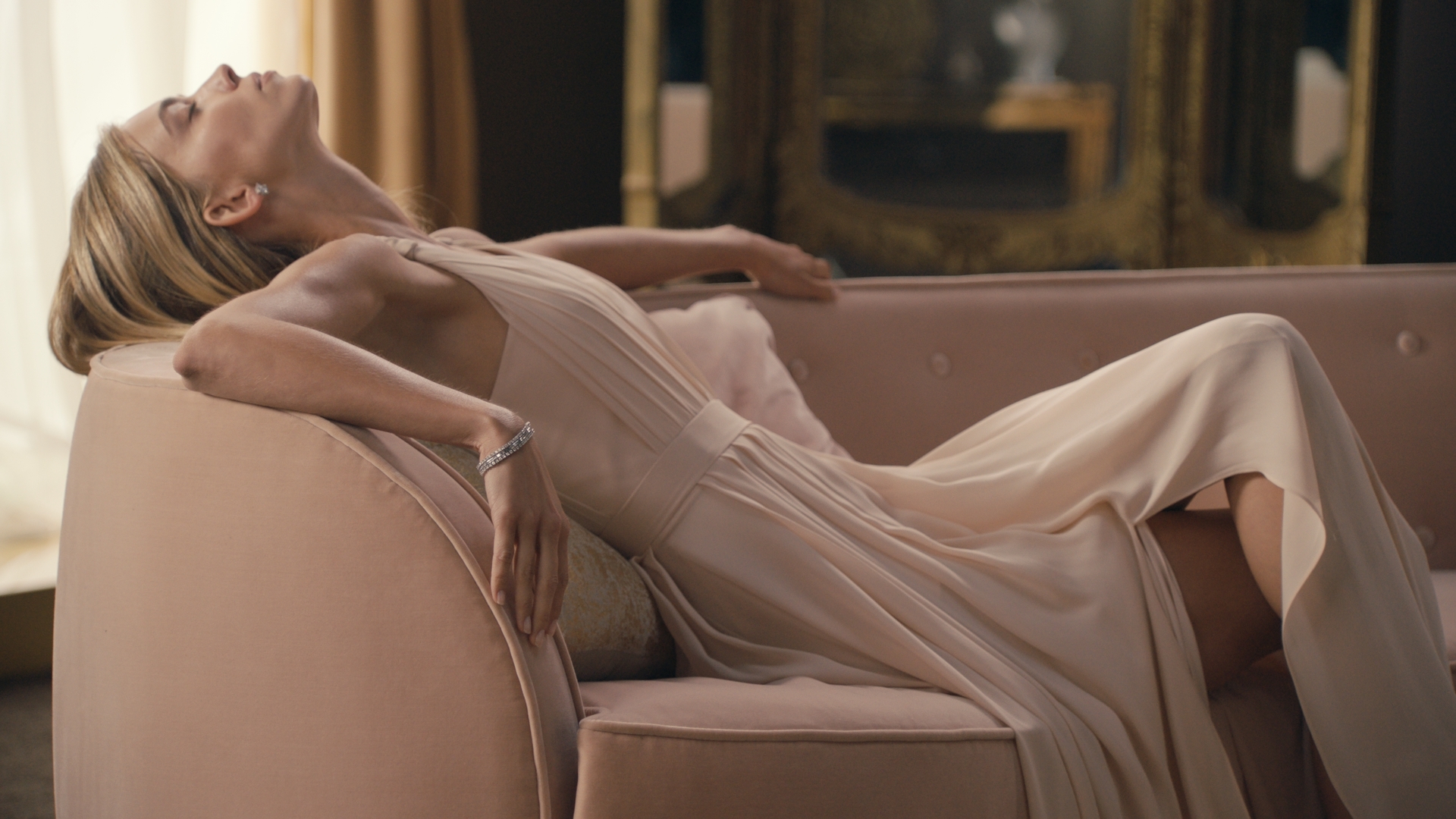
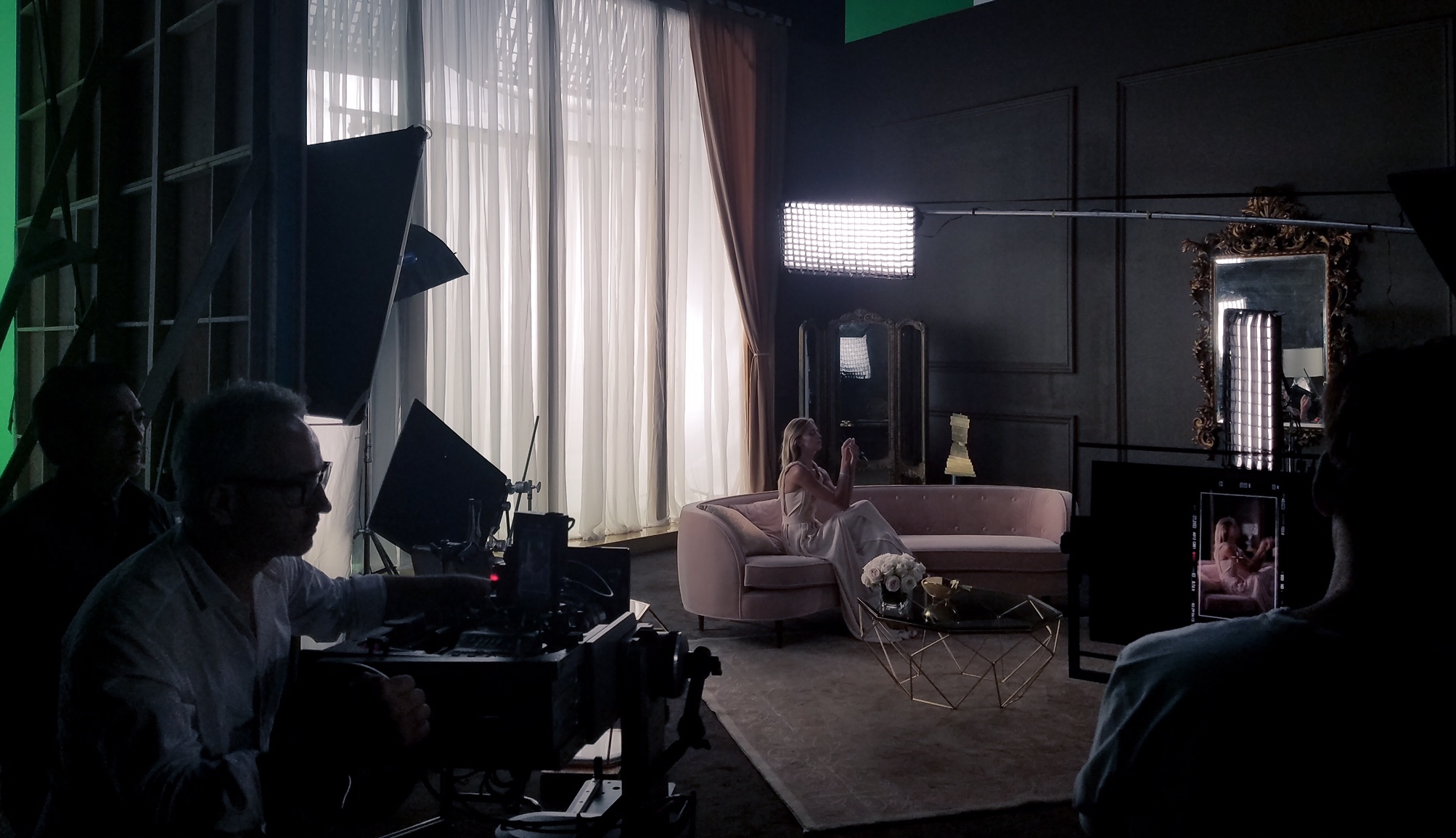

The campaign was shot over five days in August of 2017 on stage at Goya Studios in Hollywood. “It’s a great facility with a few really tall stages, which was important,” explains the cinematographer. “We needed a really tall ceiling, which is hard to find in smaller, non-studio stages. We're, obviously, not the biggest production in town, so it’s not possible to get the massive film studio stages, and finding independent stages with high ceilings isn’t easy! The production design had extremely tall elements, tall apartment windows, especially as it had to when we were shooting in 9:16 vertical mode, the sets had to be tall enough to cover the tall framing in wide shots and not see over the top of the set.”
The set is an exquisite penthouse apartment somewhere in an opulent city. The hallway outside the apartment glows from an impossible gold and the apartment main room features 20'-tall windows overlooking an urban landscape. The set was constructed practically with the hall leading directly into the apartment set. “Even though we had the largest stage at Goya, it was still a pretty tight fit," Menin says. “The hallway leads right into the apartment set and the apartment windows back up right against the greenscreen [to composite in the city lights below] — it was just enough space to do what we needed.”

The apartment set was primarily lit through the window. Menin and gaffer Jacob Abrams built two 4' x 8' soft boxes with two 2' x 8' LiteGear LiteTile+ LED fixtures in each as a key from up high through the window on the woman inside. Over the apartment itself, the cinematographer hung a 12x bounce that was skirted and then utilized a [K5600 Bug-A-Beam Joker Bug] Jo-Leko Joker 800 fixture bounced into it to create an ambient base level exposure. The greenscreen itself was lit with Kinos.
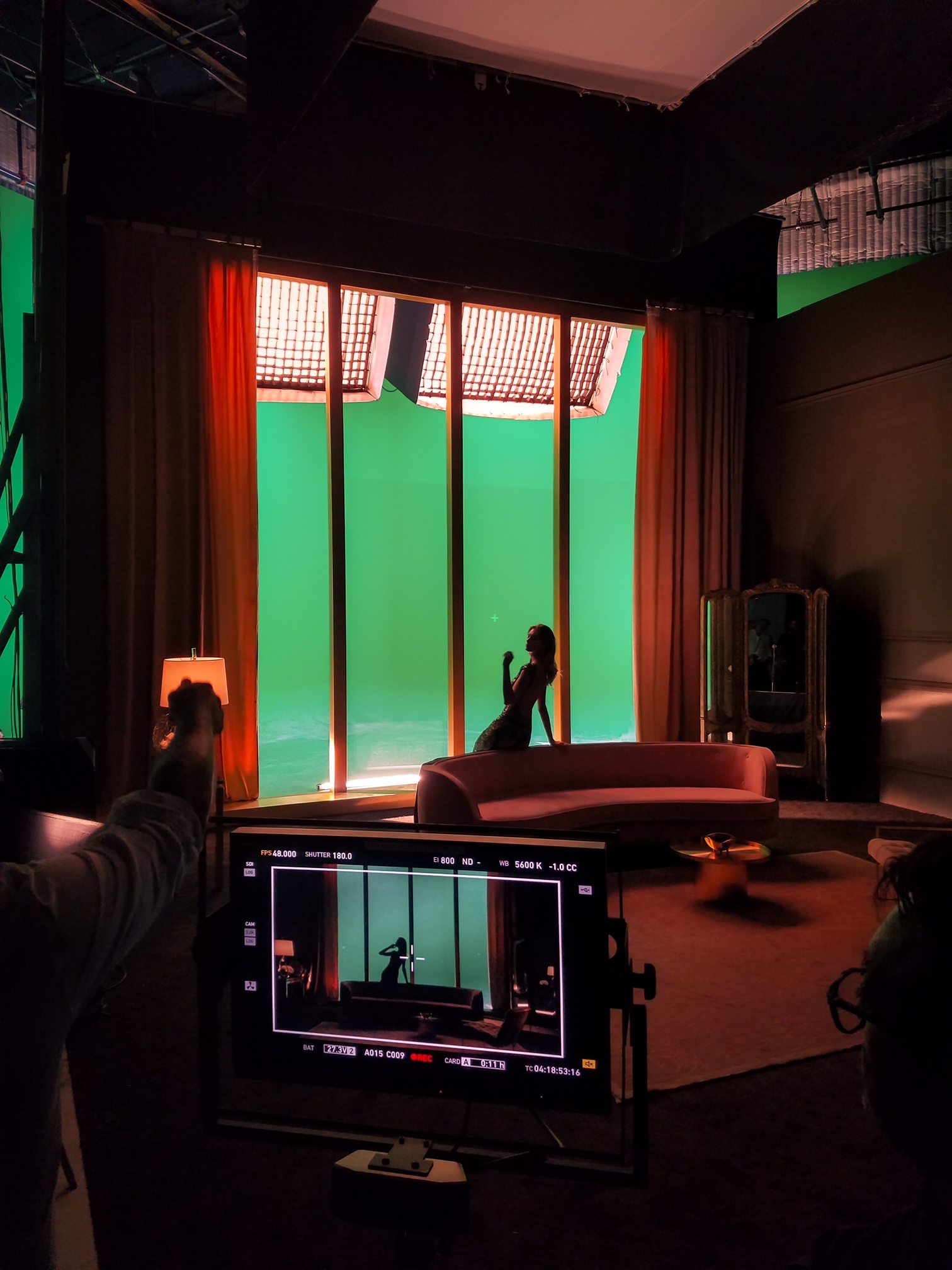
“Each of the soft boxes were 3' or 4' deep and completely covered with half Gridcloth and then faced with LCD (light control device) grids,” explains Menin. “They were hoisted up on rope and pulley and angled to get the light into the room. On closer shots, we brought them down a lot lower to get a nice flattering angle on the model. I also brought in a Sumo LED fixture as a key for the tighter shots.”
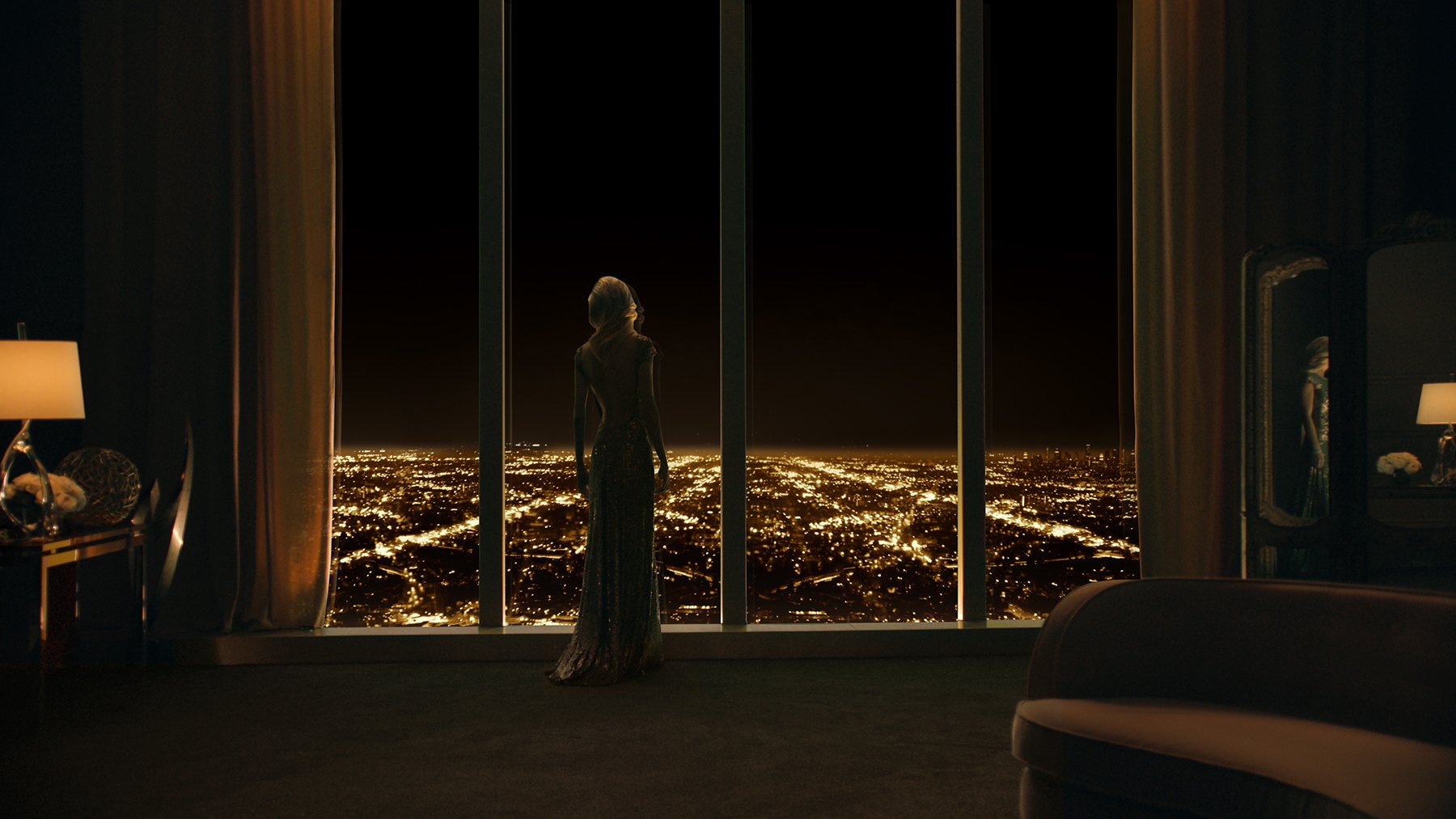
As the model stands in this high-rise penthouse apartment, we see the city lights through the window below her. In his close-ups on her, Menin introduced some soft under lighting to mimic the warm glow from the city.
“That can be a dangerous technique because it can start to look unflattering very quickly,” the cinematographer attests. “But when we tried raising the light up it just started feeling fake. We can clearly see she’s above the city and it’s amazing how literate audiences have become with lighting. The average moviegoer or audience member can pick up on when lighting isn’t right. They might not be able to tell you exactly why it isn’t right, but they can feel it.
“Jean-Claude is also a big fan of finding ways to stick lights into the lens,” Menin continues. “So we had someone on the other side of the curtains swinging a Jo-Leko to create light movement in the lens. I gained a lot from Jean-Claude and one of those things was always making light move somewhere. He’s really interested in light that moves. Even if it is a scenario where no light would naturally be moving, he likes to see the subtle little bits of movement to give the frame life. It makes an incredible difference with product shots — even with just actors on sets, he wants moving light. I took to that strongly and animated the light wherever I could.”

Possibly more striking than the apartment set is the hallway — a lustrous, glistening and shimmering pathway of gold.

“We had so many different iterations of the hallways set in prep,” offers Menin. “Production designer Laurent Turlure sketched up many different versions before we finally decided on one. One version had both sides mirrored, there were different textures, different surface reflectivity ideas — at the end of the day, the hall featured one side of gorgeous mirrors with a beautiful gold-brown tint to them and on the other side dark, French paneling wood.


“We installed LiteGear LED ribbon in slits along the floor on the bottom of the wall. The floor is a reflective gold and the ceiling is closed off. At the end of the hall is a big gold door with reflective plexi material on it. The angle of the walls and mirror is such so that you don't see a reflection of the model, only of the wood paneling. We hid more LiteGear LED ribbon behind the edges of the mirrors and colored them gold. I also hid 8' Quasar LED tubes in there that were tungsten colored and wrapped in pale yellow gel to emphasize the color. Really, though, most of the color comes from the gold door at the end of the hall.”

On the stage across from Goya’s big stage, the production had table-top products set up and Menin would bounce back and forth between the sets to approve lighting or shoot the product shots in between major setups in the big stage.

“There’s a good number of practical product shots in the spots, but also some that were CG,” Menin offers. “When the cap spins itself off and we're craning down, that stuff is CG, but the beauty product shots are practical. For the diamond stuff we had black seamless paper down and black Plexi on top of that. The art department drilled a tiny hole under the diamond so that I could push some light through it from underneath and we had three or four people manning different lights around it to get the right specular highlights and bright points off the diamond facets. I also had people panning Par Cans on and off diffusion to create that movement of light that Jean-Claude likes.

“Shooting cream was a whole new experience,” Menin continues. “It was very interesting. Like any product shot, it has to look gorgeous — like sand dunes or ocean waves — but it’s just cream. When you open the cap there are air bubbles or it just looks like a glob of white nothingness. They actually flew in a cream specialist out of New York who does all of the Dove and Estée Lauder commercials — face creams, stuff like that. We first started shooting without her and it wasn’t working. The cream looked flat or there were little hairs that would fall into it or it would melt under the lights — all sorts of variables that went wrong! Then she came in and she was an expert at twirling the cream to make the perfect swirl. She had this little candelabra bulb that she would dip into the cream and spin it, which would create a swirl with the little peak on it — it was really beautiful!

“We kept all the lights off until the moment of shooting so as not to warm the cream. Shooting with the Panavision Primo Close Focus 50mm and Close Focus 90mm lenses, when you get in that close with macro shots your depth of field becomes nothing. We were also shooting at around 200 frames per second — so I was lighting to around T11 or 16 to get the full product in focus and compensate for the frame rates. That created some heat.
“I also learned some other neat tricks,” concludes Menin. “For instance, the molten gold that we show isn’t gold at all. It’s actually olive oil, and we used gold showcard to reflect the gold into the oil — the result is really extraordinary. We also shot the olive oil at higher frame rates to give it some weight. Overall, it was an extremely fun job and I’m proud of the results!”






